Nebuchadnezzar II – Greatest Ruler Of Ancient Babylonia And Conqueror Of Judah
David Tee - AncientPages.com - All great rulers had to have a beginning and Nebuchadnezzar II was no exception to this rule. He was born in 634 BC to Nabopolassar, a general in the Assyrian army.
Two factors played a large role in Nebuchadnezzar’s early life. First, the Assyrians were weak after expanding too far. Second, his father wanted to restore the Babylon nation and make it into an empire.
King Nebuchadnezzar dreams of a great statue. Daniel before King Nebuchadnezzar, interpreting his dream. Image credit: Rijksmuseum - CC0 1.0
These factors gave Nebuchadnezzar the education that would turn him into a strong ruler. His father battled the Assyrians for approx. 10 years whittling away their territory as he waited for his son to become an adult and a capable general.
Even the Babylonian Chronicles (known as the series of tablets recording major events in Babylonian history) do not provide much detail concerning his early years. What is known is that Nebuchadnezzar II’s father strengthened his ties with the Medes, one of many Assyrian enemies by marrying his son to the daughter of Cyaxares the Mede ruler.
Nebuchadnezzar II After His Father’s Death
It was when his father was putting the finishing touches on the defeat of that Nebuchadnezzar II finally came on his own. As the Egyptian army approached to protect their Assyrian ally, Nebuchadnezzar II met them at Carchemish and destroyed the Egyptian army.
Nabopolassar, king of Babylon ruled from 626-to 605. 626-605 BC. Image source
This was to be his father’s last campaign. As the Assyrians and their capital Nineveh lay in ruins, Nabopolassar died in Babylon. In the year 605 BC Nebuchadnezzar ascended the throne and continued his father’s dream of making Babylon great again.
King Nebuchadnezzar II’s Rule Was Not All About War
Nebuchadnezzar II is well known from the Bible as the Babylonian King who conquered Judah when its King, Jehoiakim, revolted in 597 BC. This conquest led to the removal of many the Jewish citizens who occupied Jerusalem and other Judean cities.
Also, Nebuchadnezzar II expanded the Babylonian territory and to have complete rule he needed to conquer and destroy Tyre. He accomplished this feat in 585 BC. Once this city fell Nebuchadnezzar II was able to consolidate his power and rule his territory without too many issues. Although Judah remained rebellious to about 582 BC.
Detail of a terracotta cylinder of Nebuchadnezzar II, recording the building and reconstruction works at Babylon. 604–562 BC. From Babylon, Iraq, housed in the British Museum. Credit: Public Domain
Yet, war and conquering foes is not all that Nebuchadnezzar was famous for. He was also a great builder. His construction projects were so famous and spectacular that they were the envy of the known world. Also, his own people came to believe that Babylon was the center of the earth.
Imago Mundi, an ancient Babylonian world map uncovered some time ago shows this attitude as the world is placed around the nation of Babylon. One of his more famous building projects was, of course, the infamous hanging gardens of Babylon. Another was his blue colored Ishtar Gate, which so impressed ancient writers that there were complaints when it was left off the 7 Wonders of the Ancient World list.
Did The Hanging Gardens Of Babylon Really Exist?
Even though this architectural achievement was recorded on the 7 Wonders of the Ancient World list, there are some scholars who contest its existence and wonder why it was included.
Their opposition to the inclusion comes from the fact that Nebuchadnezzar himself did not mention the gardens in his own writings. The inscription is called the East India House Inscription but the work of praise by Nebuchadnezzar does not include any referral to the great gardens.
There are reasons for this. It is possible that Nebuchadnezzar II had either not started the project, or it was just in the early stages of construction. It is hard to say why it was left out. But it was not left out of the Bibliotheca Historica, Book II.10 written by Diodorus Siculus who lived between 90 and 30 BC.
The problem with that mention is that Siculus may have been talking about Assyrian Kings and a garden in Nineveh not Babylon nor Nebuchadnezzar II. It could be that Siculus simply made a mistake when he wrote his location description.
Nebuchadnezzar II Died Peacefully
Nebuchadnezzar II may have been a bit ahead of his time. Women enjoyed certain equality with men. Babylon's education and other important institutes flourished as did his empire.
It is a good legacy for a King to leave behind. Nebuchadnezzar died peacefully in his capital city, one he tried to make the center of the world.
Written by – David Tee - AncientPages.com Staff Writer
Copyright © AncientPages.com All rights reserved. This material may not be published, broadcast, rewritten or redistributed in whole or part without the express written permission of AncientPages.com
Expand for referencesThomas Nelson Publishers. (1996). Nelson’s complete book of Bible maps & charts: Old and New Testaments (Rev. and updated ed.). Nashville, TN: Thomas Nelson.
Snearly, M. (2016). Euphrates River. In J. D. Barry, D. Bomar, D. R. Brown, R. Klippenstein, D. Mangum, C. Sinclair Wolcott, … W. Widder (Eds.), The Lexham Bible Dictionary. Bellingham, WA: Lexham Press.
Wilson, C.A., “Nebuchadnezzar The Great Builder” (1972). Bible and Spade, 1(1), 9.
More From Ancient Pages
-
 Bible And Book Of Enoch Reveal Why Ancient Giant Bones Are Missing
Ancient Mysteries | Jul 21, 2018
Bible And Book Of Enoch Reveal Why Ancient Giant Bones Are Missing
Ancient Mysteries | Jul 21, 2018 -
 Ancient Romans Used The Poisonous Black Henbane Plant As Hallucinogenic Medicine
Archaeology | Feb 9, 2024
Ancient Romans Used The Poisonous Black Henbane Plant As Hallucinogenic Medicine
Archaeology | Feb 9, 2024 -
 Home Of The Gods – Arrival Of Golden Ships – Part 1
Ancient Mysteries | Jun 12, 2018
Home Of The Gods – Arrival Of Golden Ships – Part 1
Ancient Mysteries | Jun 12, 2018 -
 Winged Hussars: Facts And History About The Polish Warriors, Their Armor And Military Tactics
Featured Stories | Feb 14, 2016
Winged Hussars: Facts And History About The Polish Warriors, Their Armor And Military Tactics
Featured Stories | Feb 14, 2016 -
 1,000 Bog Bodies From Across Scandinavia Reveal More Ancient Secrets – Here’s What Scientists Found
Archaeology | Mar 20, 2023
1,000 Bog Bodies From Across Scandinavia Reveal More Ancient Secrets – Here’s What Scientists Found
Archaeology | Mar 20, 2023 -
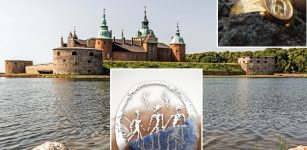 Magnificent Alsengem Among 30,000 Archaeological Objects Discovered In Kalmar, Sweden
Artifacts | Mar 5, 2024
Magnificent Alsengem Among 30,000 Archaeological Objects Discovered In Kalmar, Sweden
Artifacts | Mar 5, 2024 -
 On This Day In History: Battle Of Svolder One Of Greatest Battles of Viking Scandinavia Was Fought – On Sep 9, 1000
News | Sep 9, 2016
On This Day In History: Battle Of Svolder One Of Greatest Battles of Viking Scandinavia Was Fought – On Sep 9, 1000
News | Sep 9, 2016 -
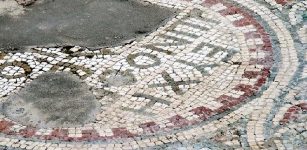 Mosaics With Oceanus And Medusa In Tomb Of Ancient City Of Perge, Turkey
Archaeology | May 16, 2017
Mosaics With Oceanus And Medusa In Tomb Of Ancient City Of Perge, Turkey
Archaeology | May 16, 2017 -
 On This Day In History: The Only English Pope In History Of Catholic Church Elected – On Dec 4, 1154
News | Dec 4, 2016
On This Day In History: The Only English Pope In History Of Catholic Church Elected – On Dec 4, 1154
News | Dec 4, 2016 -
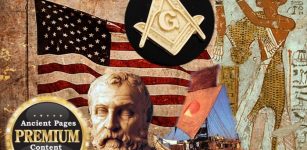 Freemasons Secrets – American Democracy Is Part Of An Ancient Universal Plan – Egyptian Temple And Legendary Expedition Hold The Clues – Part 2
Ancient Mysteries | Jul 13, 2018
Freemasons Secrets – American Democracy Is Part Of An Ancient Universal Plan – Egyptian Temple And Legendary Expedition Hold The Clues – Part 2
Ancient Mysteries | Jul 13, 2018 -
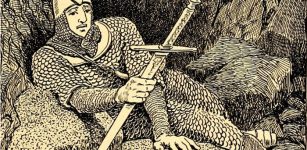 Durendal – Magical Sword Of Knight Roland That Cut Stone Boulders With A Single Strike
Featured Stories | Jan 19, 2022
Durendal – Magical Sword Of Knight Roland That Cut Stone Boulders With A Single Strike
Featured Stories | Jan 19, 2022 -
 On This Day In History: Ensisheim Meteorite Fell To Earth – On Nov 7, 1492
News | Nov 7, 2016
On This Day In History: Ensisheim Meteorite Fell To Earth – On Nov 7, 1492
News | Nov 7, 2016 -
 Shengavit Of Kura Araxes Culture: One Of Armenia’s Historical Sites Inhabited Since At Least 3200 BC
Civilizations | Apr 13, 2021
Shengavit Of Kura Araxes Culture: One Of Armenia’s Historical Sites Inhabited Since At Least 3200 BC
Civilizations | Apr 13, 2021 -
 Mysterious Ancient Underground King And Ruler Of The World – Secret Science – Part 2
Ancient Mysteries | Jul 26, 2018
Mysterious Ancient Underground King And Ruler Of The World – Secret Science – Part 2
Ancient Mysteries | Jul 26, 2018 -
 Sacred Cherokee Star Mound And The Legend Of The Star People – Beneath The Ground May Lie A Secret That Should Remain Hidden Forever
Featured Stories | Mar 23, 2025
Sacred Cherokee Star Mound And The Legend Of The Star People – Beneath The Ground May Lie A Secret That Should Remain Hidden Forever
Featured Stories | Mar 23, 2025 -
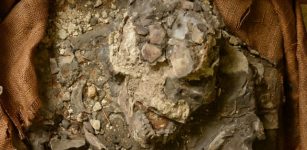 Extraordinary 6,500-Year-Old “Noah” Skeleton Re-Discovered – A Survivor Of The Great Flood Hidden In Museum
Civilizations | Aug 6, 2014
Extraordinary 6,500-Year-Old “Noah” Skeleton Re-Discovered – A Survivor Of The Great Flood Hidden In Museum
Civilizations | Aug 6, 2014 -
 Mysterious Bones May Re-Write History Of North America – Humans Were Present On The Continent 10 Times Earlier
Archaeology | May 8, 2017
Mysterious Bones May Re-Write History Of North America – Humans Were Present On The Continent 10 Times Earlier
Archaeology | May 8, 2017 -
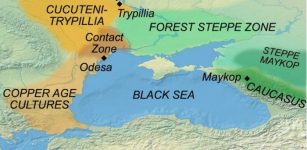 Ancient DNA Reveals The Earliest Evidence Of The Last Massive Human Migration To Western Europe
DNA | Jul 24, 2023
Ancient DNA Reveals The Earliest Evidence Of The Last Massive Human Migration To Western Europe
DNA | Jul 24, 2023 -
 Roman Leather Toy Mouse Found At Vindolanda
Archaeology | Jun 6, 2023
Roman Leather Toy Mouse Found At Vindolanda
Archaeology | Jun 6, 2023 -
 Uncovering Ancient Secrets Hidden In China’s Dunhuang Caves
News | Jan 13, 2021
Uncovering Ancient Secrets Hidden In China’s Dunhuang Caves
News | Jan 13, 2021



